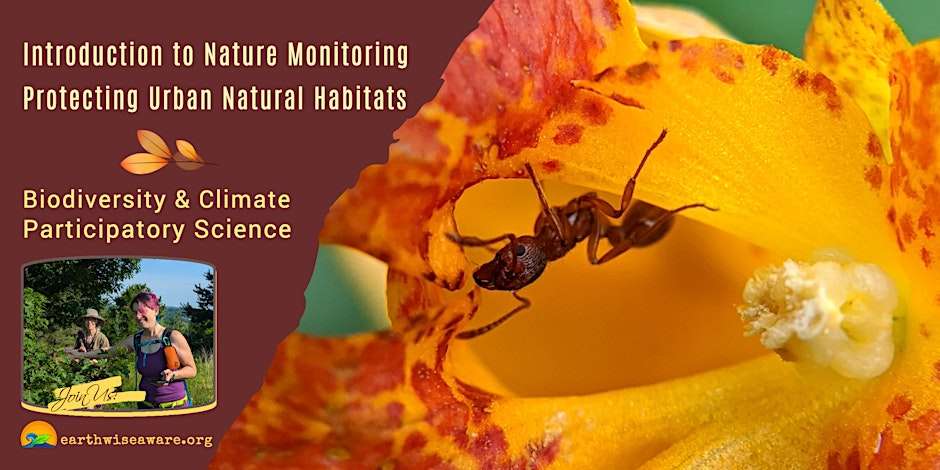Featured
What are the new career paths? Training?

What’s Changing?
- Food Systems: From industrial farming to regenerative, local, and cellular food production.
New jobs: Agroecologists, food technologists, fermentation specialists. - Energy: Transitioning from fossil fuels to decentralized, community-owned renewables.
New jobs: Microgrid engineers, solar installers, energy justice advocates. - Governance: Evolving from top-down structures to participatory, digital civic engagement.
New jobs: Civic tech designers, transparency officers, deliberative moderators. - Public & Planetary Health: Integrating human and ecological well-being.
New jobs: Climate health planners, environmental epidemiologists. - Communications & Information: From centralized media to decentralized, trustworthy platforms.
New jobs: Cooperative journalists, media ethicists, misinformation analysts. - Technology & ICT: Prioritizing ethical, inclusive, open-source innovation.
New jobs: AI ethicists, accessibility developers, digital inclusion strategists. - Finance & Ecological Economics: Shifting from GDP to well-being and regenerative models.
New jobs: Green accountants, impact investors, community wealth builders. - Smarter Cities & Circular Infrastructure: Reimagining urban living through circular design and mobility innovation.
New jobs: Urban ecologists, circular construction specialists, MaaS planners. - Accessibility & Disability Inclusion: Centering universal design in all services.
New jobs: Inclusive tech developers, neurodiverse UX designers. - Personal Democracy Movements: Empowering grassroots participation through tech and transparency.
New jobs: Civic platform moderators, participatory budgeting coordinators.
What Education Must Evolve to Do
- Interdisciplinary Learning: Blending environmental science, social justice, and digital literacy.
- Systems Thinking: Teaching people to understand complexity, feedback loops, and interconnected impacts.
- Applied Ethics & Collective Stewardship: Embedding empathy, equity, and interdependence across all disciplines.
- Cooperative & Experiential Learning: Project-based education grounded in real-world, community-led problem solving.
- Life-Long Learning & Upskilling: Flexible learning formats like micro-credentials, modular certifications, and peer-to-peer mentorship.
Conclusion: Building a Future That Works for Everyone
The future isn’t just about greener jobs—it’s about redesigning the systems we rely on for survival, dignity, and progress. That means aligning what we learn with what the world truly needs: regeneration, justice, and resilience.
Let’s flip the script—on education, employment, and the systems we shape every day. Visit MobilizedNews.com to learn more and join the movement.
Featured
The Evolution of Food Systems
Vow launches “Forged Gras” —— lab-grown foie gras
- Australian startup Vow officially released its cultured quail-based foie gras in Singapore and Australia, branded Forged Gras. The product is now served in over 35 upscale venues following regulatory approvals from FSANZ and in Singapore. Priced at around $19 per serving, it undercuts conventional foie gras while avoiding animal cruelty.
Impact: This marks one of the earliest mainstream market launches of cultivated gourmet meat—not a commodity product but a luxury food niche. It demonstrates regulatory acceptance and opens the door to high-end culinary use cases. Though production costs remain high (~$85/kg), the premium positioning may attract investors and early-adopter consumers.
GEA opens $20M U.S. pilot hub for alternative proteins
- On July 17–21, GEA inaugurated its Food Application & Technology Center in Janesville, Wisconsin. The 100% renewable-energy facility offers modular pilot-scale bioreactors for precision fermentation, cell cultivation, and plant-based ingredient testing.
Impact: This infrastructure is crucial for scaling: startups and CPGs can simulate industrial conditions before full-scale production. It lowers the barrier to entry across the supply chain and accelerates innovation in egg-white, seafood, and dairy protein production.
Growing research behind cost-effective processes
- Multiple studies underscore the promise of AI and machine learning to optimize cell culture and fermentation, as well as systems converting lignocellulosic waste into microbial protein feedstocks. These methods support cost reductions and circular production models
Impact: By integrating AI-driven bioprocess control and waste-to-protein systems, the industry can reduce reliance on expensive inputs and improve resource efficiency—critical for scaling commodity-priced alternative proteins.
ProVeg incubator includes fungi-based precision dairy startups
- In April, ProVeg’s incubator selected 10 startups—including those developing AI-enhanced protein production and precision-fermented dairy from fungi—for support and coaching.
Impact: This supports an emerging pipeline of functional proteins beyond meat, expanding ingredients into baked goods, cheeses, and novel dietary applications—strengthening ecosystem-building across global alt-protein innovation.
Sector Trends: Implications at a Glance
| Update | Sector Focus | Key Impacts |
|---|---|---|
| Vow’s Forged Gras launch | Cultivated poultry meat | Luxury focus enables early regulatory wins and culinary validation |
| GEA’s U.S. hub opening | Pilot infrastructure | Bridges R&D to industrial scale; democratizes access for startups |
| Future Cow funding | Fermented dairy proteins | Expands geographic protein innovation and non-meat ingredient diversity |
| AI & waste-to-protein research | Cost optimization & circularity | Accelerates affordability and sustainability in scaling |
| ProVeg startup cohort | Fungal precision fermentation | Builds ingredient-level innovation pipeline globally |
Featured
Personal Democracy
- These stories mark a clear shift: ecological economics is gaining traction beyond academia into practical policy, local governance, and public debate.
- They illustrate a growing understanding that ecological limits, wellbeing economies, and economic justice are interconnected.
- Policy relevance spans from UK planning reforms to farm incentives in Europe, and local governance models in places like Sweden.
Tomelilla, Sweden Adopts Doughnut Economics
- Tomelilla, a small Swedish town, implemented Kate Raworth’s doughnut economics framework in municipal planning—embedding ecological ceilings and social foundations into budgeting, urban design, transport, and procurement.
Impact:
-
- Shifted decision‑making toward regenerative and low‑carbon pathways (e.g., refurbishing instead of building anew, free public transit for youth).
- Showcased how even small municipalities can prioritize wellbeing within planetary limits.
- Inspired other cities and municipalities globally to explore similar sustainable economic models.
Op‑ed: Environmental Protection As Economic Gain (Australia)
- Economist Nicki Hutley argued that preserving nature and fighting climate change deliver clear net economic benefits—from cost savings in avoided climate disasters to job creation in clean energy.
Impact:
-
- Strengthened the narrative that ecological stewardship supports, rather than hinders, economic prosperity.
- Highlighted reduced solar panel prices and high costs of inaction (~US $143 billion/year) as economic logic for transition.
- Supports momentum for policy reforms such as carbon pricing and nature‑inclusive planning in Australia and worldwide.
UK’s Planning Bill Nature Levy Faces Blowback
- UK’s proposed “nature levy” would let developers pay to bypass environmental protections. Economists and ecologists—including Partha Dasgupta—warned this creates a “license to kill nature.”
Impact:
-
- Raised alarm about weakening environmental safeguards and undermining ecological integrity in planning.
- Pressured policymakers to revisit or withdraw the provision, emphasizing need for independent regulation and systemic reform.
- Reframed ecological economics as crucial for aligning development with planetary boundaries.
Academic & Policy Developments
ISEE Launches Special Issue on Ecological Macroeconomics
When: Call opened June 18, 2025 (submissions open July 1, 2025)
- The International Society for Ecological Economics (ISEE) invited papers exploring integrated ecological‑macroeconomic models to understand post-growth futures, climate policy, and inequality.
Impact:
-
- Encourages development of models that capture economic–ecological–social feedbacks.
- Supports transition from conventional GDP-focused narratives toward wellbeing‑oriented policymaking.
IIASA Study: Economic Gains from Mining Quickly Fade
Researchers found that while industrial mining brings short-term economic boosts, benefits fade once global prices dip—even affecting neighboring regions.
Impact:
-
- Highlights ecological-economic vulnerability linked to commodity dependence.
- Supports policy emphasis on diversified, nature-aligned development pathways instead of extractivism.
Modelling Biodiversity & Pesticide Use Relative to Farm Size
The paper introduces a spatial ecological-economic framework showing small‑to‑mid‑size farms benefit economically from reduced pesticide use combined with habitat restoration, whereas large farms struggle to do so.
Impact:
-
- Informs policy design: environmental incentives should be tailored to farm structure.
- Promotes biodiversity via cost-effective, scale‑specific strategies for pest control and sustainability.
Summary Table
| Story | Timeline | Impact Summary |
|---|---|---|
| Tomelilla’s doughnut economics adoption | July 17, 2025 | Local innovation in wellbeing economy, global inspiration |
| Hutley op‑ed: environment as economic net benefit | July 17, 2025 | Reframes ecological values as economic strengths; bolsters climate policy |
| UK Planning Bill “nature levy” controversy | April 2025 | Catalyzed advocacy for stronger nature protections in development policy |
| ISEE call for ecological macroeconomics modeling | June–July 2025 | Advances integrated modelling for post‑growth and fair‑transition policy |
| IIASA mining-economic study | July 28, 2025 | Underscores risk of resource dependence; advocates sustainable diversification |
| Farm‑scale biodiversity model | May 2025 | Builds scale‑aware agri‑environment policy nexus for biodiversity gains |

Featured
Flip the Script: Energy
How innovation in alternative proteins is rapidly accelerating—from scientific breakthroughs to strategic collaborations and market shifts. Each action not only advances technical capability but also spurs broader societal, economic, and environmental benefits.
Precision Fermentation
21st BIO Launches Program for Bovine Alpha‑Lactalbumin (α‑lac)
- 21st BIO licensed a high‑yield microbial strain from Novonesis to produce α-lactalbumin via precision fermentation—used in infant formula, supplements, beverages.
Impact: Enables scalable, efficient, animal‑free production of a premium dairy protein that is traditionally limited by supply-intensive extraction; potentially democratizes access from niche high‑end to broader markets. It reduces reliance on dairy farms and offers strong cost & sustainability benefits.
Eclipse Ingredients Emerges to Produce Human Lactoferrin
- Australian biotech startup raised AU$7 million to produce human lactoferrin using engineered yeast.
Impact: Offers access to a human-identical protein with immune, microbiome, and antimicrobial benefits—not available from bovine sources. Scalable and sustainable, this innovation opens applications in supplements, health foods, and cosmetics.
Bel Group & Standing Ovation Turn Whey into Casein via Fermentation
- New process valorizes dairy whey waste into casein proteins using precision fermentation.
Impact: Enables circular economy in dairy, turning waste streams into high-value ingredients. Improves sustainability and cost efficiency, helping dairy processors reduce environmental footprint while producing functional proteins.
Plant‑Based Proteins
Protein Industries Canada Pilot Project (Pea Protein)
- A$48.7 million initiative with Louis Dreyfus and Seven Oaks Hospital to develop new pea protein ingredients and food products for families and seniors.
Impact: Strengthens Canada’s plant‑based protein sector, meets rising demand, supports local agriculture and public health by offering tailored nutrition options for diverse demographic groups, including older minors.
Plant-Based Trends: Hybrids & Private Label Rising
- Industry shift toward hybrid meat/dairy products (blended meat + plant ingredients) and affordable private-label plant-based offerings. Dutch retailer Albert Heijn launches 15 hybrid items at price parity with conventional products.
Impact: Blended options reduce carbon emissions and saturated fat, often taste better and cost less—potential to accelerate mainstream adoption. Private-label affordability helps plant-based gain traction in Europe’s flexitarian markets
ADM Report Highlights Chickpea & Lentil Protein Growth
- ADM’s 2025 protein report signals lentils and chickpeas as rising plant‑protein sources, especially favored by flexitarians.
Impact: Drives innovation in ready meals, snacks, and foodservice; lowers reliance on traditional isolates (soy, pea), boosts agriculture diversity and nutritional balance.
Sale of Mighty Drinks Plant Milk Brand to The Mighty Kitchen
- Plant-milk brand entered administration and has been acquired by The Mighty Kitchen.
Impact: Reflects market consolidation and the financial challenges facing plant‑milk startups; acquisition offers a lifeline and potential strategic pivot toward sustainable growth in alternative dairy space.
Cellular Agriculture
Asia‑Pacific & Australia Sign MoU, Steakholder Foods Patent Path
- APAC‑SCA and Cellular Agriculture Australia signed a cooperation agreement to coordinate regulatory efforts, share knowledge, and engage public. Steakholder Foods advances patent for its Drop Location in Space (DLS) plant‑based fish printer.
Impact: This regional collaboration enables harmonized regulatory progress, better public trust and faster commercial expansion. Patent progress for printed plant‑based seafood signals innovation momentum in seafood alternatives.
Malaysian Startup Cell AgriTech Opening Pilot Facility in Singapore
- Cell AgriTech, a cultivated meat startup, is launching a pilot facility in Singapore.
Impact: Expands cellular agriculture capacity in Asia; Singapore continues to lead in regulatory openness and infrastructure for scale-up of cultured meat technologies.
Regulatory & Policy Trend: Just Transition in Livestock → Cellular Ag
- Growing calls for a “just transition” to ensure livestock farmers are integrated into new cellular ag value chains; policy frameworks emerging at EU and national levels.
Impact: Encourages inclusive economic models; helps minimize social disruption while enabling systemic growth in cellular agriculture and alternative proteins.
Summary Table
| Sector | Key Story | Impact Highlight |
|---|---|---|
| Precision Fermentation | 21st BIO α‑lac; Eclipse lactoferrin; whey → casein | Scalable, sustainable production of high‑value proteins; opens new health ingredient markets |
| Plant‑Based Proteins | Pea protein initiative; hybrid trends; pulses | Broader, affordable protein choices; dietary health and agricultural diversification |
| Cellular Agriculture | Regional regulatory MoU; new pilot facilities; policy | Coordinated commercial rollout; infrastructure growth; equitable ecosystem transitions |










